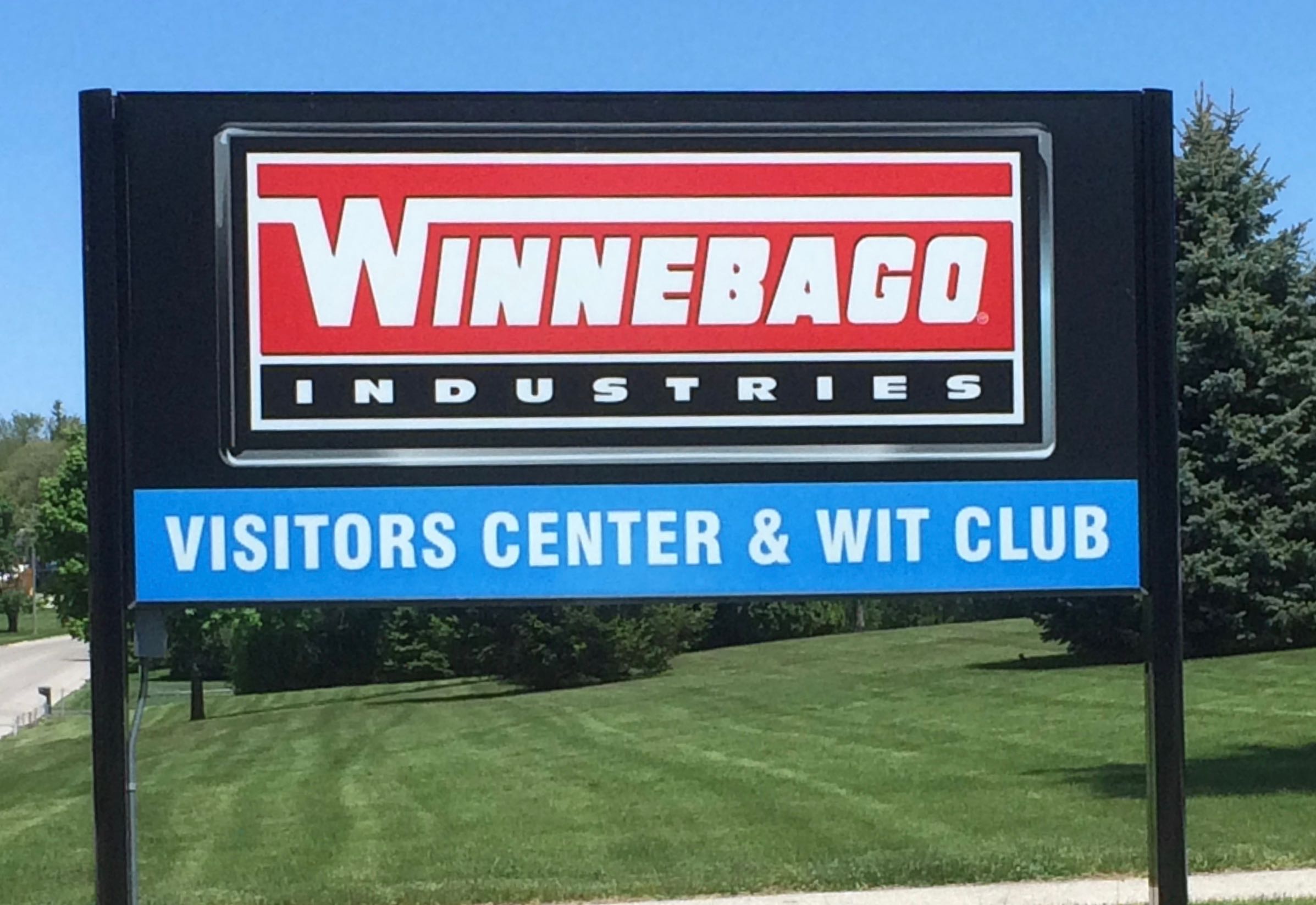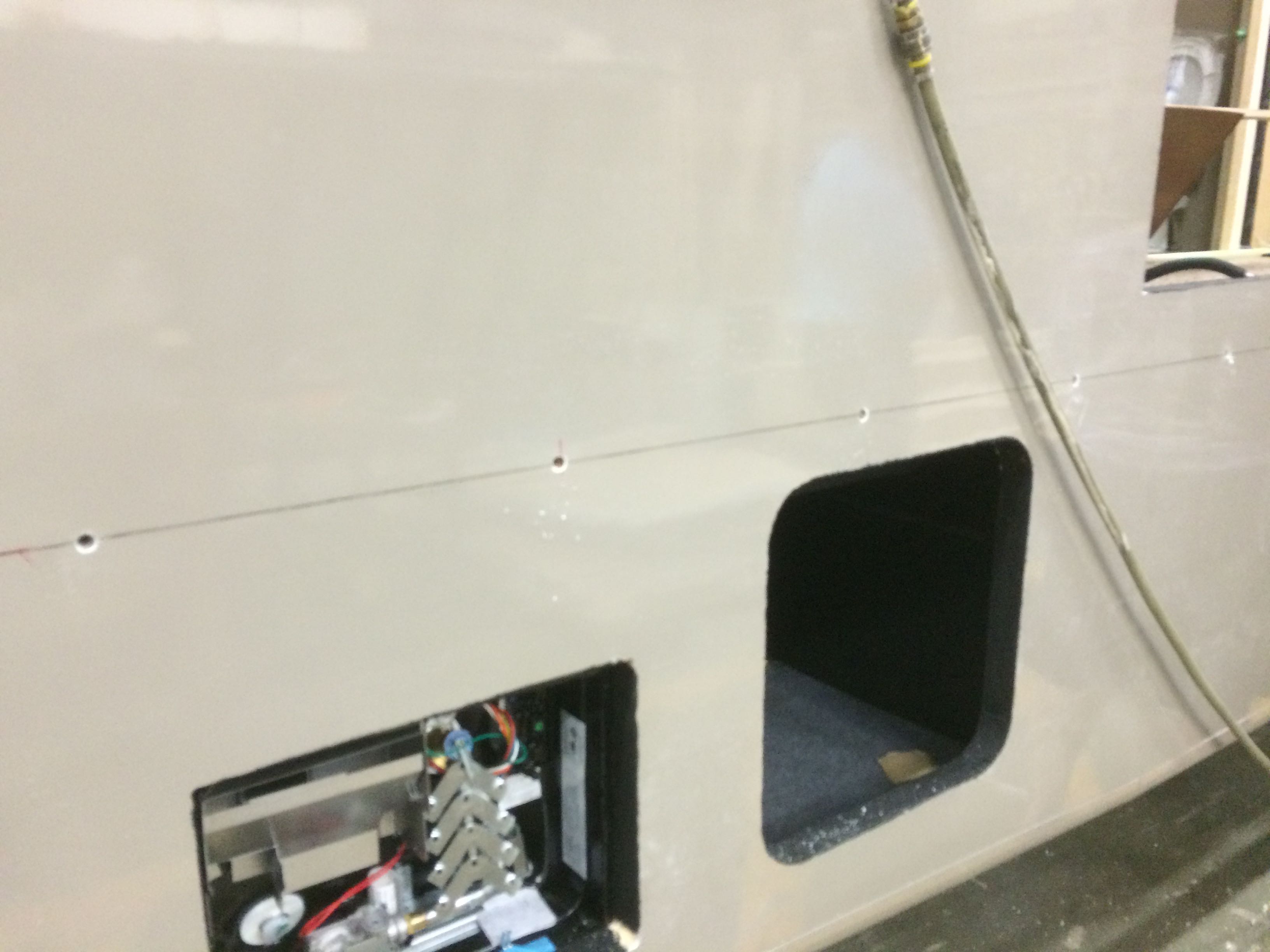On our way to becoming fulltime RVers we figured one of the most important decisions we will make is which RV to buy. We won’t have enough money to make mistakes. To that end we have taken a good number of RV factory tours. This set will likely be our last. We have learned tons. There is a huge difference between the best and the worst build qualities. If you want to read my other blog entries on the tours they are here (Factory Tours) and here (More Factory Tours) and here (The Tiffin Tour).
Winnebago motorized
 We started this time at the Winnebago motorized factory in Forest City, IA where they make all their motorhomes. If you are a big Winnebago fan and want to see where they are made, you’ll have a great time. If you are looking to see how Winnebagos are made, don’t bother going. This tour was one of least informative we have been on. Views of the work going on were from the mezzanine. There was never an opportunity to get up close to the work to see the quality. Also, the tour was conducted by someone who is hired to guide tours so they aren’t the experts in products or in the process.
We started this time at the Winnebago motorized factory in Forest City, IA where they make all their motorhomes. If you are a big Winnebago fan and want to see where they are made, you’ll have a great time. If you are looking to see how Winnebagos are made, don’t bother going. This tour was one of least informative we have been on. Views of the work going on were from the mezzanine. There was never an opportunity to get up close to the work to see the quality. Also, the tour was conducted by someone who is hired to guide tours so they aren’t the experts in products or in the process.
According to the tour guide, the cutaway wall section in the visitor’s center was representative of typical motorhome sidewall construction (click images to enlarge). If that’s true, Winnebago now uses Azdel to back their fiberglass instead of Luan. Azdel is a composite that is impervious to water and should prevent delamination. The roof locks onto the sidewall for extra strength, but the wall just sets on the edge of the floor. The joint is slightly better than a butt-joint and I would think much better than hung walls, but still not on par with Fleetwood’s Powerlock System TM.
Winnebago apparently has a fiberglass roof. The material pointed out to us was thin
enough to be on a roll, so if it was fiberglass, it’s very thin. I’m still going back and forth as to which is better, the TPO or such thin fiberglass. Both would require some type of maintenance. We weren’t able to tell much else because we were so far away from the work.
Overall, we left disappointed. Winnebago has some great videos on YouTube to see how their products are made. But their factory tour was a waste of time for us. We also were not as impressed with the overall product as we thought we would be. It’s obvious from looking at the chassis yard and the assembly lines that Winnebago cranks out a lot more Class Bs and Cs than they do As. I wouldn’t cross Winnebago off my list, but neither is it in the top three.
Coachmen
Coachmen Class A’s assembly line is a very small operation. Most of the construction was pretty typical. They do their own up-building on the chassis, the walls and roof trusses are all aluminum, and the storage compartments are all steel (some are rotocast plastic).
Two things that stood out as different were the sidewalls and the flooring. In the diesel  pushers, Coachmen uses a SnapStone interlocking porcelain tile floor. This allows them to use adhesive around the edges and the rest of the floor floats and flexes. They even provide about six extra tiles in case you damage some. The sidewall lamination process was typical, but the difference was that the wall is the full height of the motorhome, from the bottom of the compartments to the top of the roof. This wall is then screwed to the side of the floor, or hung. This technique eliminates any seam in the sidewall. Coachmen also uses Azdel in their sidewalls to prevent delamination.
pushers, Coachmen uses a SnapStone interlocking porcelain tile floor. This allows them to use adhesive around the edges and the rest of the floor floats and flexes. They even provide about six extra tiles in case you damage some. The sidewall lamination process was typical, but the difference was that the wall is the full height of the motorhome, from the bottom of the compartments to the top of the roof. This wall is then screwed to the side of the floor, or hung. This technique eliminates any seam in the sidewall. Coachmen also uses Azdel in their sidewalls to prevent delamination.
The roof is also an Azdel-backed fiberglass that wraps around the edge. The coach is then finished off in full-body paint. I doubt their smaller coaches or towables get that kind of paint.
The tour guide said that a lot of changes were warranty driven. If they had problems with delamination, they switched to Azdel. The flooring was a problem, so they changed to SnapStone. I was glad to see that kind of response rather than just hope for the best.
Winnebago towables
The tour of the towable Winnebagos was as disappointing as the motorized, but for different reasons. The tour was right on the production floor, but we only got a good look at the small travel trailers. Before we could go through the fifth wheel part, our tour was hijacked by the other couples who were more interested in seeing final product than finishing the tour.
 We did manage to learn a few things. The aluminum in the sidewalls is as sparse as possible (click image to enlarge). They use a lot of fiberglass batting for insulation. Aluminum trusses hold up a very thin fiberglass roof. Lippert Components makes the frames, compartment doors, entry doors and many other components for Winnebago. I couldn’t tell you much else, like I said, we were cut short.
We did manage to learn a few things. The aluminum in the sidewalls is as sparse as possible (click image to enlarge). They use a lot of fiberglass batting for insulation. Aluminum trusses hold up a very thin fiberglass roof. Lippert Components makes the frames, compartment doors, entry doors and many other components for Winnebago. I couldn’t tell you much else, like I said, we were cut short.
DRV
DRV makes some of the most luxurious, most customizable fifth wheels we have seen so far. We found out that DRV is a division of Heartland, which is now a division of Thor, but that has not affected their manufacturing, except giving them more purchasing power that helps to keep prices down.
DRV is a fairly small operation meaning that they use some of the simplest manufacturing  methods. The aluminum framing is put together with adhesive and screws, not wielded (click image to enlarge). All the insulation is fiberglass batting. The outer fiberglass is glued without the benefit of vacuum bonding or pinch rolling. One of the good things they do is use manifolds for all their plumbing and
methods. The aluminum framing is put together with adhesive and screws, not wielded (click image to enlarge). All the insulation is fiberglass batting. The outer fiberglass is glued without the benefit of vacuum bonding or pinch rolling. One of the good things they do is use manifolds for all their plumbing and  hydraulics (click image to enlarge). That means that every water line runs from the manifold to the faucet or toilet without joints or T’s hidden somewhere deep in the frame or a wall. Same idea with hydraulics, one line directly runs from the manifold to the slide or jack. And each line has it’s own cutoff valve. So if you have a leak somewhere you can turn off the flow to that area but the rest of the coach still has supply.
hydraulics (click image to enlarge). That means that every water line runs from the manifold to the faucet or toilet without joints or T’s hidden somewhere deep in the frame or a wall. Same idea with hydraulics, one line directly runs from the manifold to the slide or jack. And each line has it’s own cutoff valve. So if you have a leak somewhere you can turn off the flow to that area but the rest of the coach still has supply.
Another good feature is not unique, but it is rare, and that is an external tank sensor to  judge levels (click image to enlarge). Since the sensor is outside the tank they won’t get fouled over time and should always give an accurate reading. This would be very important to boondockers. Plus, fewer holes in your tank.
judge levels (click image to enlarge). Since the sensor is outside the tank they won’t get fouled over time and should always give an accurate reading. This would be very important to boondockers. Plus, fewer holes in your tank.
The most remarkable thing we found out about DRV is how customizable they are. You could add or delete windows (you have to have at least one for fire safety), delete dishwashers and have a cabinet put in and so on. Best of all, you get credit for deletes or downgrades. Most manufactures will delete, but you don’t get credit for it.
As I said, it was great learning how RVs are made. But unless we lean towards a manufacturer we are not familiar with, we are not likely to take any more tours. And we are armed with knowledge. A few questions to the factory rep will give us an idea of build quality.


